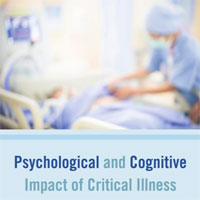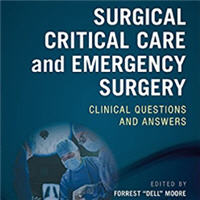Tag: trauma
Holographic Telepresence – Taking Trauma Care to the Next Level
Advancing technology is all set to bring in a new era of highly-realistic holographic Telepresence. Throughout the history of science fiction and video gaming, we've seen holograms come in various shapes and sizes. Today,... read more
The Glutamine Debate in Surgery and Critical Care
Three recent meta-analyses have confirmed traditional glutamine (GLN)-supplemented (or "GLN-Complemented" – providing GLN for completeness of amino acid content) TPN is safe, reduces mortality and improves outcome in surgical... read more
Psychological and Cognitive Impact of Critical Illness
Hot off the presses. Concise book on PICS, PICS-F and FICUS. Neuropsychiatric problems after critical illness are receiving increasing attention, particularly in the critical care medicine literature, but mental health and... read more

Driving Pressure in Airway Pressure Release Ventilation: a fool’s errand?
In this post I will briefly explain and critique their mathematical approach, propose a simpler equation for estimating PEEPi in APRV [based on far fewer physiological assumptions] and finally reaffirm why, in my opinion,... read more
Early Protocolized Versus Usual Care Rehabilitation for Pediatric Neurocritical Care Patients
A protocol for early personalized rehabilitation by physical therapy, occupational therapy, and speech and language therapy in pediatric neurocritical care patients could be safely implemented and led to more ICU-based treatment... read more
Evaluation of a Safer Opioid Prescribing Protocol (SOPP) for Patients Being Discharged From a Trauma Service
The aims of this study were to evaluate the effects on opioid medication prescribing, patient opioid safety education, and prescribing of naloxone following implementation of a Safer Opioid Prescribing Protocol (SOPP) as... read more
Closed Chest Compressions in Traumatic Cardiac Arrest
This study demonstrated that fluid resuscitation with whole blood is significantly better than resuscitation with compressions alone or with normal saline. It further showed that there was no difference between whole blood... read more
Reversal of Oral Anticoagulation in Patients with Acute Intracerebral Hemorrhage
In light of an aging population with increased cardiovascular comorbidity, the use of oral anticoagulation (OAC) is steadily expanding. A variety of pharmacological alternatives to vitamin K antagonists (VKA) have emerged... read more
Top 10 Perioperative Applications of Point-of-Care Ultrasound for Anesthesiologists
Anesthesiologists have been leaders in the use of point-of-care (POC) ultrasound for intraoperative transesophageal echocardiography (TEE), and to guide vascular access and regional anesthesia procedures. Recently, anesthesiologists... read more
Surgical Critical Care and Emergency Surgery: Clinical Questions and Answers
A unique question-and-answer book for surgical residents and trainees that covers all surgical aspects of critical care and acute or emergency medicine. This is a comprehensive, one-of-a-kind question-and-answer text for... read more

Is Pre-hospital Coagulation Management in Trauma Feasible?
Coagulation management remains a formidable challenge in severely bleeding trauma patients. A strong rationale suggests starting treatment of trauma-induced coagulopathy in the pre-hospital phase. The burden of trauma is... read more
Reducing Emergency Department Length of Stay
An interdisciplinary team of front-line physicians, nurses, medical assistants, and executives assembled and used value stream mapping to assess the entire ED care process, from patient arrival to admission or discharge.... read more
Teaching the Principles of Pediatric Critical Care to Non-Intensivists in Resource Limited Settings
It is a dismal reality of global health that the vast majority of critically ill or injured children are found in regions of the world least equipped to care for them. Most of these severely ill or injured children are cared... read more
The Effects of Family Functioning on the Development of Posttraumatic Stress in Children and Their Parents Following Admission to the PICU
Both children and parents have alarmingly high rates of acute stress and posttraumatic stress following the child's PICU admission. Although family function did not emerge as a predictor in this study, further understanding... read more
European Guideline on Managing Post-traumatic Bleeding: 5th Edition
An updated guideline on the management of significant bleeding and coagulopathy following major trauma has been released by the pan-European, multidisciplinary Task Force for Advanced Bleeding Care in Trauma. The document,... read more
Ketamine In Acute and Chronic Pain Management
The view of chronic pain as a symptom of a disease, rather than a disease state itself, has contributed to neglect in treating this condition. Although it is generally acknowledged that patients with chronic pain use significantly... read more
Safety of Early Tracheostomy in Trauma Patients After Anterior Cervical Fusion
Cervical spine injuries (CSIs) can have major effects on the respiratory system and carry a high incidence of pulmonary complications. Respiratory failure can be due to spinal cord injuries, concomitant facial fractures or... read more
Indications and Outcomes of Extracorporeal Life Support in Trauma Patients
Data from the largest registry of critically ill trauma patients receiving extracorporeal life support (ECLS) demonstrates reasonable survival. With growing experience and improved safety profile, trauma should not be considered... read more
Extravascular Lung Water as a Target for Intensive Care
Extravascular lung water (EVLW) remains a useful guide for monitoring pulmonary edema (PO) and vascular permeability in sepsis, acute respiratory distress syndrome (ARDS), and heart failure. In addition, EVLW has a prognostic... read more
Management of Pediatric Severe Traumatic Brain Injury
This article provides an algorithm of clinical practice for the bedside practitioner based on the available evidence, treatment protocols described in the articles included in the 2019 guidelines, and consensus that reflects... read more
Trauma Electives in South Africa Provide Valuable Training for International Surgeons
Trauma training and trauma preparedness are increasingly areas of concern worldwide. Formal military conflicts over the past 2 decades have ensured that most military surgeons have been exposed to a significant volume of... read more
Intrathoracic Pressure Regulation Therapy Applied to Ventilated Patients for Treatment of Compromised Cerebral Perfusion from Brain Injury
These data support the notion that active intrathoracic pressure regulation, in this limited evaluation, can successfully augment cerebral perfusion by lowering intracranial pressure and increasing mean arterial pressure... read more









